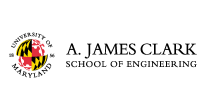What is EMG?
Electromyography (EMG) seeks to interpret the electrical signals that result from muscle contractions. At the most rudimentary level, EMG is a tool for diagnostic of muscle actions and as a means of controlling any interface that is designed to take input from the EMG data.
Team CHIP is a senior team investigating the use of EMG as a means of prosthesis and as a method for interactions with current technologies to enhance the lives of the average person. The acronym CHIP once stood for Computer-Human Interface for Prosthetics, but now primarily remains for historic reasons. Currently, the team is focusing its efforts on the development of a muscle training/gaming platform that would be effective in rehabilitating post-stroke patients, specifically focusing on the ability to regain functional walking ability. Our research attempts to provide definitive feedback regarding the activation of specific muscle groups and to present this information in the form of entertaining gameplay. It is expected that victims who are able to practice their muscle activation while being entertained will exhibit more improvement in muscle coordination than those who simply perform repetitive muscle drills.
What can EMG do for you? EMG has applications in:
- Muscle Training
- Physical Therapy
- Medicine
- Prosthetics
- Input Devices
Sponsors and Affiliates
This research is conducted in conjunction with the Gemstone Program at the University of Maryland, College Park. Gemstone is a four-year collaborative program focused on providing students with the opportunity to conduct research in areas that impact society through the use of science and technology. The program is affiliated with the A. James Clark School of Engineering.
Additionally, this project is being conducted in conjunction with Dr. Sandra Waller and Dr. Jill Whitall of the Physical Therapy and Rehabilitative Sciences Department at the University of Maryland, Baltimore. They have provided assistance in developing the excercise regimen for post-stroke rehabilitation and also in recruiting post-stroke subjects.

